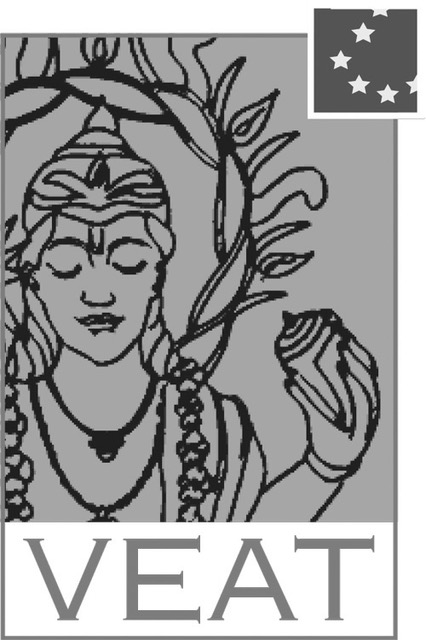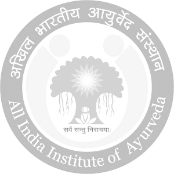"(vata has the following properties:) Dry, cool, light, fine, mobile, non-mucous or clear, as well as rough. From substances having properties opposite to these, vata is appeased." (verse 59).
In like manner (verses 60-61) the other two doshas are described. Here are only the respective qualities:
"Pitta is somewhat oily, hot, penetrating, liquid aggregate state, acid, mobile like a liquid (flowing) and pungent." "Kapha is heavy, cool, soft, oily, sweet, solid and viscous or slimy."
Two things become clear from these verses: 1. a dosha shows itself by means of certain qualities (gunas), and 2. to balance a dosha, one must supply opposite qualities.
Thus, dosha activity can be seen by the expression of properties assigned to it in the body; if the dosha is overactive, these properties increase in the body; if it is not active enough, they decrease. For example, in the vata-dominated disease osteoporosis, the properties dry, light and rough are over-represented in the bone tissue. In other words, all substances or influences to which we are exposed, by means of their specific properties, shift the dosha relationships in the body - be it diet, behaviour, remedies, climatic or even emotional influences.
Therapeutic goal
The aim of Ayurvedic health teachings is to establish a healthy balance ('homeostasis') of the properties in the constant change of these different influences again and again. For each body organ or each functional circuit (tissue, transport functions, excretions, metabolic functions) a specific ratio is to be regarded as 'normal' or 'healthy'. The same applies to the individual dispositions (constitution) of a person. Each person reacts differently to the influences mentioned and must therefore be treated differently.
Pathologically significant are above all 'increased' or 'aggravated' doshas, i.e. the increased occurrence of dosha-related characteristics. Accordingly, Ayurvedic therapy endeavours to counterbalance the over-represented qualities by means of dietary and behavioural recommendations as well as remedies (shamana). In the case of osteoporosis, this would be remedies that counteract the causative vata qualities through their heaviness, oiliness and 'smoothness'. Another approach is to remove from the body those substances whose properties are particularly detrimental to the balance of the doshas. This is done by means of elimination procedures (shodhana or pancakarma).
Milieu and properties - the key to correct understanding
In order to understand the significance of these properties and their shifts, one should make comparative use of scientific findings. The thesis is: the properties are signals for milieu compositions and the doshas their hidden controlling principles. Let us start with a simple example: the weathercock! When a weathercock turns, a child might ask: "What actually moves it?" - The wind!, is the answer. "But what makes the wind move?" - By shifts in air pressure ratios! The constantly changing air pressure conditions are a dynamic milieu, that is, an atmosphere full of transformations. They ultimately determine the visible changes that gusts of wind cause on the weathercock, for example.
Let us transfer this thought to the body, e.g. to enzymes! Enzymes are highly potent substances that convert all important chemical reactions in the body and thus underlie most bodily functions. They need a certain atmosphere (milieu) in which they can optimally develop their effect. In the case of digestive enzymes, the pH value is usually considered decisive: certain enzymes need a rather acidic, others a rather alkaline milieu. Beyond enzyme reactions, research has discovered even more important active substances, such as hormones, neurotransmitters (nervous messengers) or neuropeptides ("brain hormones"). These are considered the conductors of the entire body orchestra. However, on closer inspection, they too are dependent on optimal milieu conditions in their environment. These milieus are shaped by the composition of dissolved substances. One could also speak of a 'juice' or - in Ayurvedic parlance - of a specific mixing ratio of properties. Milieus change according to fundamental laws of nature. If we look at the classical description of the properties of the doshas, we find three basic classes of milieus. These are each finely differentiated and go far beyond the distinction of, for example, an acidic or alkaline milieu. In Ayurvedic terms, an environment can be oily, moist or dry. Hyperactive, moving or sluggish. Hot, warm or cold. Hard or soft. Solid, liquid or gaseous. Mucilaginous or non-mucilaginous....
Ayurveda thus classifies milieus on the basis of such properties and refers to the doshas as those forces that control milieu changes. Enzymes, but also hormones, neurotransmitters or neuropeptides are only the mediators that cause visible changes on the material level of our body.
dosha functions
A complex living entity like the human body can be understood and treated in this way according to its dynamic nature. Attention is directed away from the differentiation of ever finer active substances, towards the dynamic functions and interrelationships. Let us just consider the main function of the doshas: vata stands for movement (kinetic energy); pitta for splitting and releasing energy (catabolic, thermal principle). kapha for building and structure (synthesizing, anabolic principle). The usefulness of this division of physiology into three basic areas is illustrated by an example at the cellular level. The cell is considered the smallest material functional unit of our body system. If one roughly adjusts the focus, all processes that take place in the area of the cell can be divided into three essential areas: Substances enter the cell. There they are broken down. Energy is released and the synthesis of cellular structures takes place. Waste products, on the other hand, are excreted. Supply and excretion are transport processes or movements, i.e. they are assigned to vata. Splitting and energy production are pitta-related processes. The building of cell structures is expressed by kapha. Based on these main functions, the dosha functions are finely differentiated in Ayurveda, so that the entire physiology and pathology can be grasped with their help.
Practicable
Certainly the above examples are general in nature. However, Ayurveda is not limited to the three doshas. It is based on an extensive theoretical system that takes into account a variety of aspects in making a complete diagnosis. Nevertheless, the rough division of physiology, pathogenesis, symptoms, therapy and the multiple influences on our body system into three areas (doshas) is both useful and practical. By determining the characteristics we get information about the milieu conditions. This is usually sufficiently possible by means of our own senses. Excessive properties are balanced by opposite ones and through this milieu correction normal function can be restored. With some basic knowledge about the properties or the dosha-assignment of food, remedies and behaviours, even the layman can positively influence his state of health and prevent pronounced stages of illness. This rough classification helps the physician to keep an eye on the connections of a complex case, to positively influence unclear disease patterns and - as clinical practice proves - to heal even severe diseases.
Whether the doshas are merely a workable concept that establishes a connection between the outer and inner worlds, between the psyche and the body, between diagnosis and therapy, between constitution and individual disorder, or whether they are real forces of nature, remains an open question at this point. But perhaps modern science will one day discover equivalents for the time-honoured doshas.













